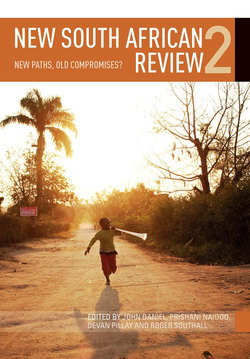Читать книгу New South African Review 2 - Paul Hoffman - Страница 44
На сайте Литреса книга снята с продажи.
MONKEY BUSINESS: REMAKING THE PARTY’S IMAGE
ОглавлениеIn October 2006, the party’s main strategist, Ryan Coetzee, put forward a document entitled ‘Becoming a party for all the people: A new approach for the DA’ in which he indicated the stark realities facing the party. Despite its gradual consolidation of support from racial minorities, it had never polled more than two per cent among black voters. Unless that changed dramatically, the party faced ‘irrelevance and slow disintegration over time’:
Our challenge … is to do what no party in South Africa’s history has ever managed: to unite in one political home people of all races … We must not underestimate the scale of this challenge: it will be very difficult to succeed, because we are taking on all of South Africa’s history and the way that history has divided people (cited in Mail & Guardian, 20–26 May 2011).
Notwithstanding his rather ungenerous reading of the ANC’s historic commitment to nonracialism, Coetzee’s analysis stated the politically obvious, however uncomfortably that might sit within the DA’s own ranks: that unless the party drive for support among black Africans, it would be limiting the potential for its upward movement in the polls.
The rebranding that Coetzee saw as necessary to the remaking of the party’s image was severely constrained as long as Tony Leon, whose aggressive style was widely considered offensive to Africans, remained as leader. The election of Zille in his place provided the opportunity for the party to rebrand itself, to diversify its top leadership structures, and to move beyond the DA’s image as a ‘white party’. If, in turn, an assertive drive for the African vote would displease right-wingers who had arrived in the party following its 2008 merger with the NNP, then their support was to be regarded as dispensable. The DA, argued Zille, did not have a choice.
The rebranding began in earnest during the lead-up to the 2009 election. The party’s electoral campaign began at Constitution Hill on 15 November 2008 when Zille unveiled its new logo, declaring that the DA was launching a new vision for South Africa. The change in image was aimed at increasing the party’s internal social diversity and attracting votes from those who, while sharing its values, had not historically supported the DA. ‘The specific goal was to wrestle with the party’s negative image as a white minority party, to recreate a new DA that would be more diverse, more reflective of South Africa’s racial, linguistic and cultural heritage’ (Jolobe, 2009: 138) But the DA’s ‘liberal tradition would remain as embodied in the party’s and the country’s constitution’ (ibid.)
The process of selling the party anew to black communities then began in earnest, helped of course by the increasing levels of political tolerance and lower levels of violence which are becoming a welcome feature of South African elections as time wears on (Daniel and Southall, 2009: 241–243). Even though efforts to secure the coloured vote in the Western Cape dwarfed the party’s drive for African votes, Zille made determined forays into African townships, and was at pains to be seen clad in the DA’s startlingly dark blue T-shirts, surrounded by African supporters. Yet it was not until the 2011 local government elections campaign that Zille’s strategy took off. For one thing, the DA’s principal poster which featured photos of three women (Zille herself in the centre, De Lille to her right, and Lindiwe Mazibuko, a black DA MP, to her left), presented the message that the party was for all colours. For another, she took the fight right into ANC territory, interspersing her English and Afrikaans with isiXhosa.
Both symbolically and territorially, the DA appropriated much of the style and imagery of the ANC itself, to the latter’s huge annoyance. Zille sang and out-danced even Jacob Zuma, and basked in her disparaging depiction by ANC Youth League leader Julius Malema as ‘dancing like a monkey’. And then she launched the DA’s manifesto in Kliptown, birth-place of the Freedom Charter, and marked Freedom Day (28 April) in Solomon Mahlangu Square in Mamelodi, Pretoria, while her supporters sang reworked ‘struggle songs’. Even more annoying to the ANC was her claim that, while the ANC had become increasingly racialised, the DA had become the party of nonracialism, embodying the vision and values of Nelson Mandela. It was unsurprising that, in the words of Defence Minister Lindiwe Sisulu (2011), the DA was labelled a vehicle for ‘perpetuating white privilege’, and that Zille’s ‘parading herself’ with a ‘few blacks’ was dismissed as a political gimmick.
The DA was adamant that the new strategy had paid off. ‘South Africans of all backgrounds heard our image,’ claimed Zille, and as has been noted above, while the party’s support among Africans remained small (five per cent), it increased significantly from the national election in 2009 (one per cent). But will this be enough to achieve the break-through that the DA requires?
